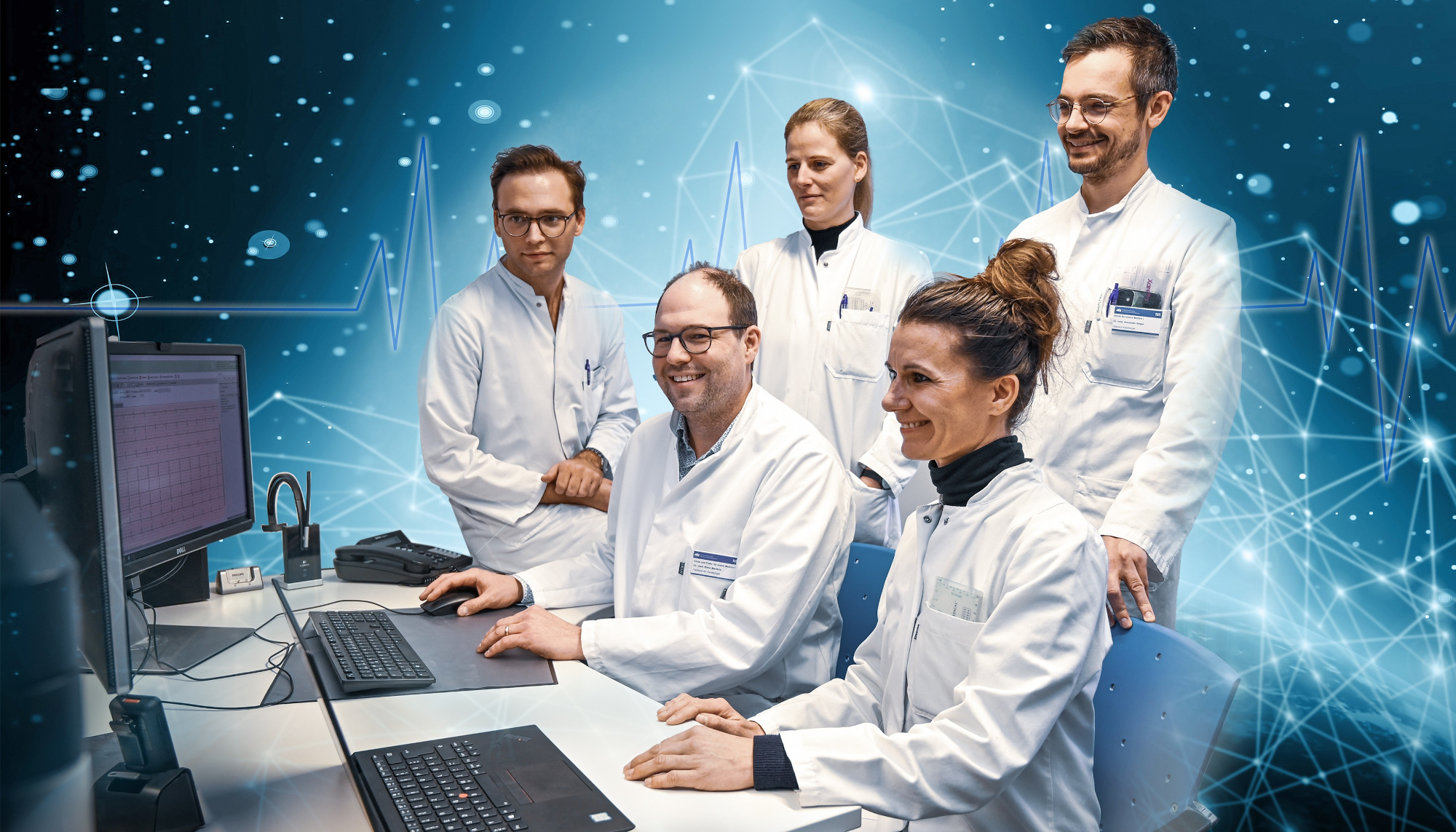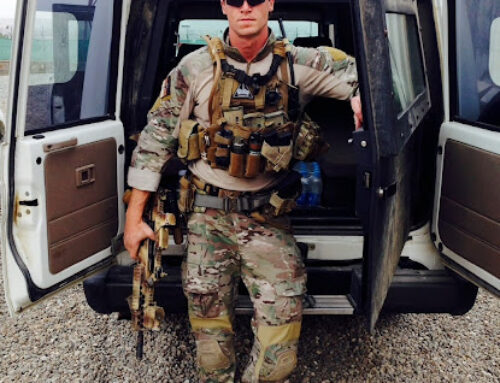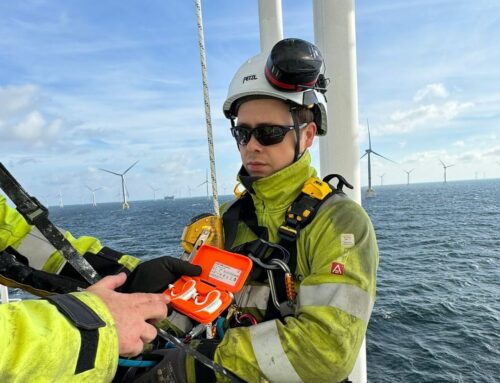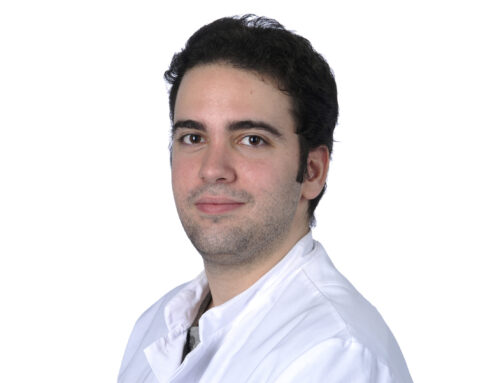Interview with Dr. Eimo Martens and Dr. Franziska Hahn
Despite the acceleration caused by the Corona pandemic, digitization is still having a hard time in the German healthcare system: A lot of patient data is organized by hand and sent by fax between clinics and doctors’ offices. At the same time, however, some progress has been made in recent years, such as the monitoring of vital parameters with the help of wearables and digitized evaluation using algorithms. Dr. Eimo Martens, Head of Cardiology Device Therapy and the Telemedicine Center at the Klinikum rechts der Isar in Munich, and his colleague Dr. Franziska Hahn continue to drive these developments forward. With the establishment of the telemedicine center at the hospital, the two have set themselves the goal of establishing digital solutions and demonstrating the advantages of telemedicine services.
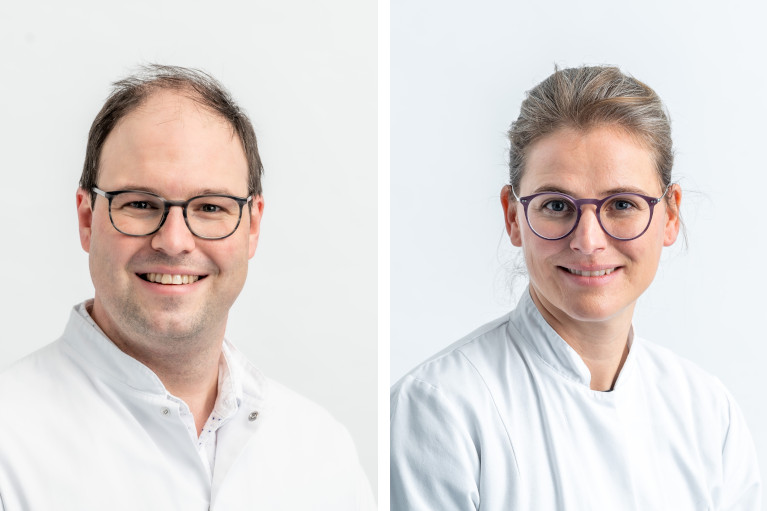
About the interviewees
Dr. Eimo Martens, specialist for internal medicine and cardiology, is senior physician as well as head of device therapy and the telemedical center of the Klinikum rechts der Isar.
Dr. Franziska Hahn, specialist for internal medicine and cardiology, works in the telemedical center of the Klinikum rechts der Isar and is responsible for the care of telemonitoring patients.
Dr. Martens, you played a key role in setting up the telemedicine center at the Klinikum rechts der Isar in Munich. How did that come about?
Dr. Martens: Like Dr. Franziska Hahn, I am a cardiologist and electrophysiologist. That means we deal with cardiac arrhythmias. Since this line of work is very technical with things like recording and evaluating ECGs and setting pacemakers, you probably automatically bring a technical interest with you. However, I have actually been familiar with telemedicine since my time in community service. Back then, I helped set up telemedical support in the rescue service in East Frisia. I have also been involved with hospital IT for quite some time. In the past, everything was still printed on thermal paper for the pacemaker checks, stuck in the patient’s file and the values entered by hand in the pacemaker cards. At that time, I thought that this could not continue and made sure that the data of the pacemaker checks were transferred from the programmer to the clinic system. It has to be said that it has actually been possible to monitor pacemakers and implantable defibrillators remotely since 2001. We in Munich entered the field of remote monitoring in 2009. However, remote monitoring of heart failure patients was not covered by health insurance until last year, 20 years later.
Dr. Hahn: At that time, I was in the same working group as Dr. Martens. We thought: There is the possibility of providing patients with telemedical care – then we’ll do it, too. And so we have been accessing all the devices via an online portal since 2009 and recognized the advantages of this at an early stage.
Dr. Martens: This is the reason for my or our interest in telemedicine. We have been doing telemedicine for cardiovascular patients for a very long time. With the increasing availability of sensors and technical possibilities, such as Videovisite in the times of Covid-19, we have gradually expanded the field. We relatively quickly included our patients from the Klinikum rechts der Isar in the monitoring and founded the telemedicine center. We have expanded this with various other use cases. Already planned before the Corona pandemic, but spurred on by it, we set up telemonitoring on our own in 2020, with our own nursing management. Here we collaborated relatively quickly with cosinuss°. This began with the TeleCovid study, initiated by Prof. Dr. Georg Schmidt [Note: Head of the Biosignal Analysis Working Group at the Klinikum rechts der Isar of the Technical University of Munich]. The whole thing was then transferred to the interdisciplinary telemedicine center when we were able to hire the appropriate personnel for it.
Dr. Hahn: Telemedicine and device care have been around for more than ten years now, and I am very pleased that these services are finally billable and can also be used in everyday clinical practice. We, or rather the whole of cardiology in Germany, benefit greatly from this.
What are your responsibilities at the telemedicine center?
Dr. Martens: In the clinic, Dr. Hahn and I mainly perform pacemaker implantations and revisions. In concrete terms, this means that we implant pacemakers and defibrillators in patients. The clinical follow-up takes place as usual in the pacemaker outpatient clinic. In the Telemedicine Center, we perform telemedical follow-up of patients with ICDs, CRTs, event recorders, subcutaneous ICDs, LifeVests and external wearables especially for heart failure patients. Furthermore, we monitor and visit RSV-, Influenza- and Covid-19-positive patients daily via telemedicine using ear sensors.
In addition to the medical work, I also take care that we attract more partners and new projects. My main focus is to acquire research projects including research funding. We have received over ten million euros in research funding for our telemedicine center in the last five years. In addition, one of my core tasks is to realize the funding of care. This is now the case for heart failure. Currently, we are also trying to make it possible to provide blood pressure monitoring. Next, we are currently working on getting nursing home visits reimbursed as well. These are already billable in Saxony, for example.
What can you tell us about your experience with telemedicine so far in your day-to-day practice?
Dr. Martens: The nursing staff – in our case consisting of an intensive care nurse with an additional qualification in heart failure as well as medical technical assistants and medical students – carry out the preliminary work. In concrete terms, this means that they look at the alarms on the monitoring dashboard and first filter out technical causes, e.g. if the patient has not transmitted any data. In such a case, we have to call the patient and give him or her instructions to reactivate the monitoring. For us doctors, we are left with the pre-filtered alarms, which we have to sift through. On this basis, we have to decide what needs to be done. This medical part of our work represents a considerable workload. In order to reduce this workload and to automate certain processes, we now use algorithms that help us to evaluate the patient data. In order to be able to rely on such a computer-based evaluation in the end, it is of course important that we receive sufficient learning data. Since we started heart failure monitoring with mobile sensors as a service for practices in January 2023, almost 6,000 ECGs have already been collected. So we already have a lot of data here from which we can learn.
The fact that we can keep an eye on our patients and simply call them if something happens is something that I now consider “state of the art. – Dr. Franziska Hahn
What advantages do you think digitization in medicine brings? And what improvements have you already experienced yourself in your telemedicine center?
Dr. Hahn: What I really like is that we can integrate all patient data and measurement data, ECGs, etc. into our clinic system. In concrete terms, this means that I click on a patient and then I see his or her examinations from the clinic, such as cardiac ultrasound, ECG, long-term ECG and also the pacemaker query at our outpatient clinic, but also the telemedical findings. I have all that in one system. In principle, Dr. Martens has realized that you have all the data together, transfer it to SAP and can actually already make it available to the referrers via the electronic patient file (ePA). As a cardiologist, I can’t imagine it any other way. We have hundreds of device patients in telemedical follow-up. For me, our monitoring system is like a huge virtual cardiology outpatient clinic. For example, we have many patients with ion channel diseases, whom we monitor – like all patients – seven days a week. This allows us to react much faster if something is wrong. The data transfer from the internal cardiac devices routinely takes place at night. This means that I have the data on the same day and can react. However, with some of these internal and external devices, the transmission can also be patient-triggered. We look through all the data and can see if someone has cardiac arrhythmia or a technical malfunction. We then call the corresponding patient and respond to the malfunction within 24 hours. I think that’s really super. Without telemedical follow-up, the malfunction or problem would only be noticed in the event of complications or at the next visit to the clinic (usually every 6-12 months). So the fact that we can keep an eye on the patient and simply call if something is wrong, and that we can record everything in the ePA or make it available in the ePA, I now find “state of the art”. Personally, I have become very accustomed to this in my daily clinical routine. I find it very pleasant to have so many virtual outpatients and to be able to monitor them telemedically. I really wouldn’t want to do without it.
How do you assess the potential for telemedicine in Germany? What challenges and what opportunities do you see?
Dr. Hahn: I consider the potential to be very high. Unfortunately, there always has to be a high level of suffering or “need” before anything can be done. We have been doing telemedicine in this area for over ten years, but it took a Corona pandemic for it to really take off. Covid-19 was and is bad on the one hand, of course, but on the other hand it was also a godsend for telemedicine. I can’t imagine my work without remote monitoring, and I’m very glad it’s continuing to pick up steam. However, I find that telemedicine developments in Germany take an insanely long time. Digitization in healthcare seems to be progressing much faster in some other European countries.
But it must also be said that telemedical services can generate a lot more work. In addition to device patients, I also care for patients with external wearables. These are heart failure patients who weigh themselves every day and measure their ECG, blood pressure and heart rate. This amount of health data also needs to be sifted through and assessed. That’s a lot of work, you have to remember that. I can therefore understand many physicians in private practice who cannot afford or do not want this considerable additional work if it is not sufficiently remunerated. It is only possible to cope with this effort if you have the appropriate staff and the structures of a large practice. If you are well positioned here, however, I see very good opportunities and advantages, as is already the case here.
Dr. Martens: I also see the potential of telemedicine in Germany as very great. In addition to the problems mentioned by Dr. Hahn, I see another one: the German billing system. This is designed so that the doctor only earns money when the patient is sitting in front of him. In other countries, for example in Sweden, a hospital receives the state money for the region it has to serve. So there is a hospital and a care center where nursing professions play a much bigger role than in our country. They get a fixed budget and have to use it to do all the pacemaker checks. For this reason, Swedish physicians have not done a single pacemaker check in the hospital for many years, because it is known that only a few percent of patients with an implantable device ever need reprogramming. All other information can be retrieved remotely and only the patient who needs reprogramming can be ordered to the hospital. In my opinion, the German billing system creates a waste of resources when the doctors’ offices call the patients once a quarter to check the pacemaker. This is technically and medically not reasonable, but currently the doctor only receives money in this way. We order these patients only once a year, even if our administration prefers the classical way, i.e. every quarter.
What other challenges for telemedicine arise from data protection, which is strictly regulated in the EU?
Dr. Martens: Data protection is very important, but it is also an obstacle to rapid developments. In the area in which we are active, however, we have found a very good solution in that we use the data at the manufacturers of the sensors in a pseudonymized form and bring it back together in our system. But certainly data protection is one of the most time-consuming factors. In my experience, most patients would like their data to be shared between their medical providers. That would benefit us as well. Most patients fail to fully share their information with the appropriate parties, and this creates information gaps. In an emergency, for example, we have no information about the patient digitally. Even when heart failure patients come to us with a pink referral slip from their general practitioner, we first have to gather the analog records from the last 20 years.
Another problem is the lack of intersectoral cooperation. This should be much better. Many manufacturers have long been lacking technical options for better interoperable communication, e.g. HL7 FHIR, but these are simply not implemented because everyone wants to cook their own soup. So we have to deal with data protection and technical hurdles.
We needed a sensor that was equivalent to monitoring in a monitoring station – basically a kind of “intermediate care unit”. There are still not that many alternatives to the in-ear sensors from cosinuss°. – Dr. Eimo Martens
In the field of telemedicine, you have carried out joint projects with cosinuss° in recent years. Can you tell us a bit about these?
Dr. Martens: We have been carrying out various monitoring projects for some time. Ultimately, our aim is always to monitor and evaluate vital data. The main problem, however, is that consumer wearables extremely truncate or collapse this data due to battery voltage. With a commercially available smartwatch, I as a physician receive relatively little information. But for our analyses and risk prediction, we need raw data, or at least some kind of raw data signal that a PPG sensor generates – comparable to a signal we would see in an intensive care unit. So we need really good data for scientific reasons, but also for clinical purposes to correlate alarms with the raw data signal. After all, that’s something we do every day in the ICU: When it alarms, we look at the screen, within half a second, and we also validate just as quickly: “Does it fit or does it not fit?”, “Do I need to save the patient or not?”. And that is the problem with consumer wearables: If, for example, someone has a lot of extrasystoles, he comes to us in the outpatient clinic and tells us that his smartwatch shows him a pulse of 30. But if the patient has no complaints and the long-term ECG shows that it is ventricular extrasystoles, we could have easily detected them with the algorithms from the PPG signal. We can also distinguish them from supraventricular extrasystole. But if we don’t have the corresponding signal, we can’t see it. Then we can only tell the patient that a pulse of 30 is not true. So the bottom line is that many of the available sensors and wearables are not able to give out valid data with the built-in algorithms. That’s why we needed a sensor that would send us valid data. That’s how cosinuss° came into play. For the aforementioned TeleCovid study with Prof. Dr. Georg Schmidt, we needed a sensor during the first wave of the Corona pandemic to reliably measure the vital data of the patients. A big problem at that time was that we had a lot of patients with us and had to monitor them with the monitor. After all, with Covid-19 in particular, there was a great risk that patients objectively had an undersupply of oxygen but did not notice it [Note: Silent Hypoxemia]. Some of the patients had a blood oxygen saturation of 70%, but they were still sitting there as if nothing was wrong. We were only able to see this thanks to the sensor technology from cosinuss° or with the sensor technology here in the hospital. At the beginning of the Corona pandemic, there were far too many patients who stayed at home too long and came to the hospital too late. In addition, we had far too many patients in the hospital. After all, everyone was afraid, and so were we. So we took them in generously because nobody knew what the exact problem was. So we needed a sensor that was equivalent to monitoring in a monitoring station – basically a kind of “intermediate care unit”. There are still not that many alternatives to the in-ear sensors from cosinuss°. Prof. Dr. Schmidt found the fact that all the required vital parameters are measured in one sensor and that the measurement takes place in the ear very charming. There are, of course, pulse oximeter sensors for the finger, but these also require a temperature sensor, which is then again not so practical. But we wanted to make it as easy as possible for the patient to handle. And, as already mentioned, we needed really good data quality. In addition, it had to be a sensor that could be reused. One-way products represent a very high cost factor. So at that point cosinuss° was the only manufacturer that met all the requirements.
Are there any other current or planned projects with cosinuss°?
Dr. Hahn: Yes, for example, we monitor outpatients with Covid-19 or influenza. The goal is to conserve resources: Through remote monitoring, we want to recognize when the “ideal” time is to readmit the patient if his or her condition worsens. This allows us to keep beds free for those patients who cannot be discharged due to their health condition. We also monitor patients who have been inpatients, for example, due to cardiac catheterization. It is planned that these patients will then be discharged home with the sensor in order to save resources, so that optimal care is ensured and any postoperative infections are detected in good time.
How do you assess the potential of technologies such as those from cosinuss° for the healthcare industry in the coming years? In your opinion, will they be integrated on a large scale into everyday clinical practice in Germany?
Dr. Martens: As I already mentioned, it is really very difficult to get into reimbursement in Germany. Basically, this is only possible via the innovation fund for new forms of care. We have already included cosinuss° here. In the current application, we are providing patients who are treated on an outpatient basis with an additional monitor and monitoring them from home for about a week. We want to find out whether continuous monitoring is really necessary or whether intermittent monitoring is sufficient. We think it makes sense to initially have intermittent monitoring, as is the case on the normal ward: the nursing staff measures blood pressure and pulse three times a day. However, if it is then determined that the patient’s condition is deteriorating, we can switch to continuous monitoring in order to decide whether further measures or a “switch back” to intermittent monitoring is appropriate. And it is precisely this procedure that is very well possible with the cosinuss° sensors. We think that this procedure is very useful for monitoring respiratory infections, among other things. Here we still have a large proportion of incorrect admissions, especially from nursing homes. This could be significantly improved with such a sensor and monitoring system. At the same time, I also think that this is only possible in large and well-equipped centers like ours, because otherwise the additional workload is not manageable.
In summary, this means that certain prerequisites must be met before sensor technology such as that from cosinuss° can be introduced into standard care: The effectiveness and efficiency of the monitoring solution must be investigated and proven in studies. However, the implementation of controlled randomized studies is very time-consuming. And in the end, it also depends to a large extent on convincing individual decision-makers – from hospital directors to politicians.
That’s why we are and will continue to be very committed to advancing the field of telemedicine. We think it is extremely attractive and the only way to make our healthcare affordable in the long term and to guarantee large-scale care.
The images were provided by the Telemedicine Center of the Klinikum rechts der Isar, Munich, Germany.
